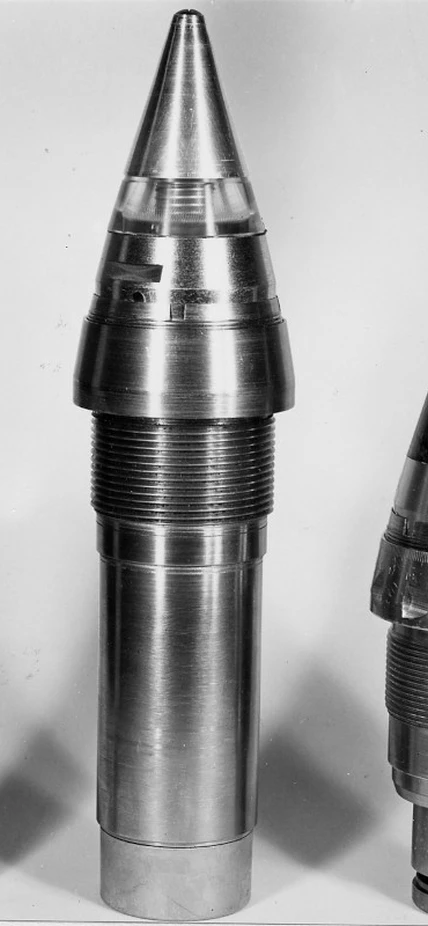In 1940, as World War II engulfed Europe and Asia, Carnegie scientists began work on a secret weapon that would revolutionize warfare and contribute significantly to the Allied victory in 1945. The story of that device, called the “proximity fuze,” is vividly told in a 1945 press clipping book—donated to the Earth and Planets Laboratory Archives by Charles and Robert Hunter in memory of their father, George B. Hunter, who worked on the fuze at the *Department of Terrestrial Magnetism (DTM) in 1942.
Editor's Note: The Department of Terrestrial Magnetism merged with the Geophysical Lab in 2020 to form the Earth and Planets Laboratory.

DTM's Merle A. Tuve's development of the proximity fuze is publicized in the multiple newspapers. News clipping courtesy of a press book was donated by Charles and Robert Hunter in memory of their father, George B. Hunter, who worked on the fuze at DTM in 1942.
Caption: "Dr. Merle A. Tuve: A Chevy Chase physicist this week was being billed as one of the nation's No.1 heroes in developing a secret weapon."
Fuze research and development in the U.S. was organized under Section T of the National Defense Research Committee (NDRC).
Created in August 1940 by NDRC chairman – and then Carnegie Institution for Science President – Vannevar Bush, Section T was placed under the leadership of DTM physicist Merle A. Tuve, assisted by Richard Roberts, Lawrence Haftstad, Lloyd Berkner, and other DTM colleagues. Within a few months, over 100 additional "Section T" personnel swelled DTM’s Cyclotron Building.
Tuve’s dictum guided the frantic pace of development: "I don't want any damn fool in this laboratory to save money. I only want him to save time."
Unlike earlier fuzes that relied on timers, each proximity fuze contained a miniature, continuous-wave radar set that enabled an artillery shell to detonate with high precision by sensing the distance to its target – whether it be an enemy aircraft or ground forces. But developing such a device posed formidable engineering challenges, as the staff of the newly formed “Section T” of the National Defense Research Committee (NDRC) quickly learned.
After countless iterations, involving more than 40 industrial and academic contractors, the fuze was finally ready for anti-aircraft trials in the Chesapeake Bay in August 1942. Its ability to down drones astonished the Navy observers present, proving its readiness for combat. Five months later, in the Pacific Theater, the cruiser USS Helena brought down a Japanese bomber with just five artillery rounds equipped with proximity fuzes. By then, Section T had already outgrown its space at DTM and had moved into a large building on Georgia Avenue in downtown Silver Spring, MD. The administration was transferred from the Carnegie Institution to Johns Hopkins University and the new unit was named the Applied Physics Laboratory (APL) with Merle Tuve as its first director.
By the end of the War in 1945, 22 million proximity fuzes had been produced. After the atomic bomb and radar, the fuze was the biggest research and development project of the War and it mobilized 112 companies. The payoff was enormous: the fuze was credited with saving London from destruction by German V-1 flying bombs and played a crucial role in the Battle of the Bulge and at Okinawa. Although its development was kept secret throughout the conflict, APL finally released the heroic story of the proximity fuze to the public in 1945.
Tuve continued his leadership of APL until 1946. He then returned to DTM and served as director of the department until his retirement in 1966.
Written by Shaun Hardy
18 November, 2014
